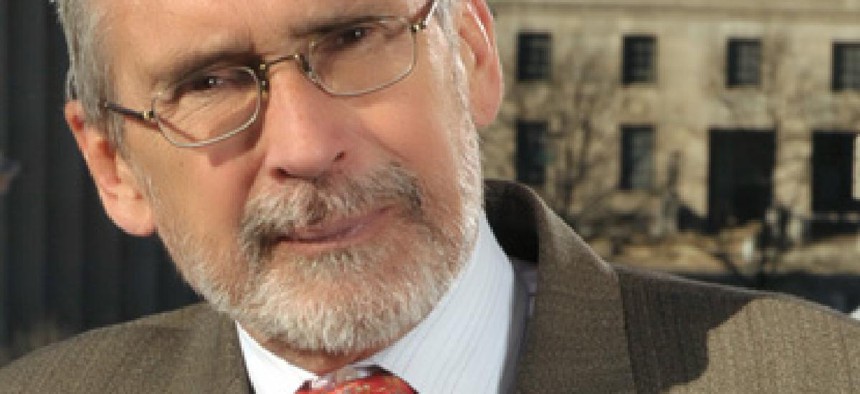It's too soon to abandon CIOs

Alan Balutis argues we should let CIOs perform as the Clinger-Cohen Act intended before reinventing the role yet again.

The recent resignations of U.S. Chief Technology Officer Todd Park and CIO Steven VanRoekel have sparked some interesting discussion about their respective roles and responsibilities.
Larry Allen, former president of the Coalition for Government Procurement and now president of Allen Federal Business Partners, noted the widespread turnover across government, writing: "The exit lane in the federal CIO parking lot has a severe backup." Nextgov has asked, "Is the CTO role still relevant?" Former Presidential Innovation Fellow Clay Johnson opined that he wasn't sure we needed the CTO role anymore: "I think what we really need to do is hire better CIOs."
Former Department of Homeland Security executive Keith Trippie, meanwhile, has already forsaken the present to ponder what the CIO will look like in 2020. In a comment piece for Federal News Radio, he said he believes the role will evolve into the chief strategy officer. Trippie said the CSTO (which uses the "ST" for strategy to distinguish it from chief security officers) could join the CIO, the CTO, the chief information security officer, the chief privacy officer, the chief data officer, the chief analytics officer and others "to help the government transform into a customer-centric, business-focused entity."
But I, for one, would feel much more comfortable scrapping the Clinger-Cohen Act paradigm of 1996 if we had ever actually tried or achieved what Rep. William Clinger (R-Pa.), Sen. William Cohen (R-Maine) and others set out to accomplish.
I went back to the legislative requirements for the CIO position outlined in Section 512 (a) of the Information Technology Management Reform Act of 1996 (ITMRA), which established the position of CIO by amending Section 33506 of the Paperwork Reduction Act of 1995, 44 U.S. Code Chapter 35. I reread the accompanying report language (to avoid admonition from Paul Brubaker) and dug out a yellowed copy of the excellent IAC/CIO Task Force report published in 1996 under the leadership of Renny DiPentima, former president of SRA International.
And I even unearthed one of the first reports issued by the new federal CIO Council titled "What Makes a Good CIO," authored by a long-forgotten Commerce Department career executive.
So let's dispel some misconceptions that seem to exist today:
- The CIO was never seen as a retitled "designated senior official for information resources management" who would focus on servers, firewalls, data centers and the department secretary's BlackBerry.
- Instead, the CIO was seen as a full partner with the CEO, the chief financial officer and business unit executives in driving business transformation, with IT as a key enabler.
- Critical success factors for the CIO include having the right relationships, identifying and capitalizing on core competencies, and delivering the appropriate technology to support business transformation.
- Therefore, CIOs must be key members of the senior management team who influence the agencies' strategic plans, re-engineer business processes, develop the acquisition strategies and contracting vehicles necessary to build the technology infrastructure, develop an IT architecture, perform investment analyses and budgeting for all IT investments, and conduct detailed reviews of all major projects.
- The CIO would oversee business transformation, security, privacy, data and so on.
In contrast, the 1990 CFO Act is widely regarded as having brought real benefits to the federal executive branch. Its main authors -- Sens. William Roth (R-Del.) and John Glenn (D-Ohio) -- guided and oversaw its implementation. Sadly, neither Clinger nor Cohen was able to do the same for ITMRA. But the legal framework remains, and it is as relevant now as it was almost 20 years ago.


